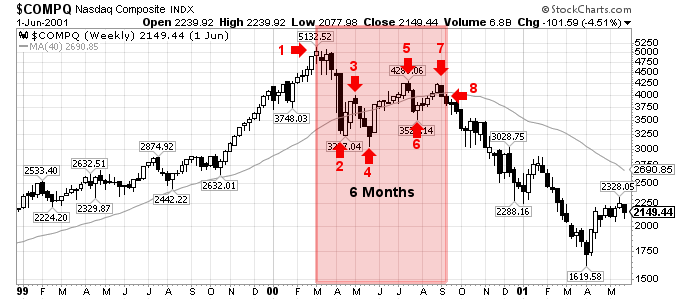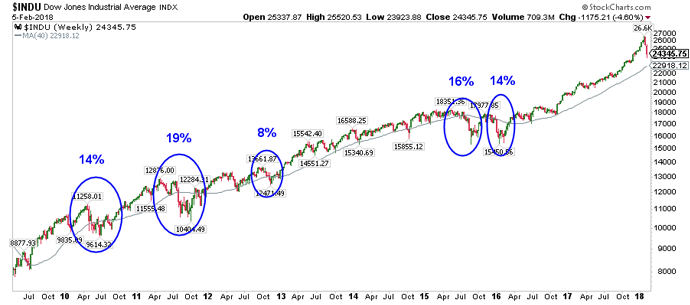“Stand by your stocks as long as the fundamental story of the company hasn’t changed”
– Peter Lynch
This is what the Stocks to Watch 2021 list is going to consist of. I’m standing by the stocks and brands that I trust the most. I own several of these stocks already and plan to hold them while looking to add others. While the products and services of these stocks are well known and are not going anywhere anytime soon, their stock prices will fluctuate. This is NOT a buy list, it’s a trends list containing stocks of companies I believe will be around for years, growing sales and earnings, regardless of their recent performance.
I am sticking with the steady and consistent performers this year, stocks and companies that have proven themselves already. I have sprinkled in a few newbies but the bulk of the list are known brands. I believe this will be the trend going forward while smaller and lesser-known stocks will be volatile with short-lived hype.
I’m not posting the latest fad list of growth stocks that may pump up quickly in the matter of weeks or months only to worry if they will they collapse. Let’s leave that to the traders because I trade poorly.
Boring? Perhaps, but that’s great investing as the big trends last for years.
We should NOT want to be in-and-out of positions quickly. We should want to hold them, over time. We want to learn to be patient during drawdowns and negative headlines, knowing the story of the underlying stock has not changed. This is a lot easier said than done, especially in today’s world of instant satisfaction and gratification.
Playing the long game is a lesson that has been flashed to me constantly over the past twenty years but I think I am only starting to learn it now. I hope to continuously get better at applying this lesson over the next twenty years as it will substantially increase my bottom line.
2020 was an incredible year, in terms of the stock market and particularly growth stocks. The Stocks to Watch 2020 list finished the year with a collective gain of 202.35%, an incredible feat during a global pandemic. It was not surprising as many of the trends I identified in January were only accelerated by the pandemic, QE and the work-from-home lockdowns. All 15 stocks showed a gain and 12 of the 15 ended with a triple digit gain. LVGO was the biggest gainer, up 457.74%.
I don’t expect 2021 to repeat this feat so our expectations need to be set now, back to historical norms. In fact, I see several of these stocks as extended and beyond ideal entry areas and know they may be vulnerable as I post this annual list on an arbitrary date every New Year. Please pay attention to the individual analysis as several of these stocks are ripe for a deeper correction which will allow for better setups in the future. If you own them already, hold patiently and look to add on constructive dips.
Nothing on this blog is a recommendation to buy, sell or hold, rather it’s a diary of my own analysis into yearly trends. Again, this is NOT a buy list. This list identifies trends which I believe will continue to last for years.
I screen, watch and then buy stocks based on a few simple parameters:
- Great product, service and brand
- Rising sales QoQ and YoY
- Rising EPS QoQ and YoY or EPS looking to turn positive (from negative territory)
- Increasing institutional sponsorship
- Technically: grabbing near support, at a breakout or within a base (near the 50d or 200d moving average)
That’s really it – I keep it simple.
I must repeat what I said last year and will repeat every year:
The annual “Stocks to Watch” list often includes newer and up-coming growth stocks that I own or candidates I am looking to own. Stocks such as AAPL, AMZN, GOOGL, MSFT, NFLX, FB, V, MA, etc. should be owned in almost every portfolio already, whether in your active trading account or a more passive retirement account. Own those stocks as they will all likely double or triple over time, once again. Own an index fund as well and add dollars to it annually, during up and down years – just do it and check back in 30 years.
Honestly, 95% of all folks should just own index funds and call it a day and forget about trading or investing in individual equities.
My annual blog post, Stocks to Watch, targets equities that I trade within my active investing account, an account that’s smaller and more active than my conservative accounts (retirement, index and company stock). I don’t disclose the number of shares or the size of the account as that’s personal information. What I will disclose, here and on twitter, is what I own, what I buy and what I sell. I do believe in being transparent with the equities I hold as well as the equities I don’t when discussing them on the blog or social media.
I don’t trade for a living nor do I aspire to trade for a living. I invest to increase my overall net worth and to “play the game”. I do get a thrill at trying to beat the market averages by making my own decisions. Some years this works and in others, it doesn’t.
“Know what you own, and know why you own it” – Peter Lynch
Let’s dive into the trends and my favorite brands to own in 2021:
Trends that will continue during and post COVID & 30 stocks I like across the groups:
- E-commerce: SHOP SE PINS ETSY CHWY
- Payments: SQ PYPL
- Security: CRWD OKTA ZS
- Edge & Cloud: FSLY NET APPS TWLO
- Database: MDB DDOG PLTR
- Health: TDOC GDRX
- Fitness: PTON
- Streaming: SPOT
- Digital Adv: ROKU TTD
- Tech Utilities: ZM DOCU CRM U FVRR
- Services: UBER ABNB
NOTE: The bottom of this blog post lists 10 additional stocks that I considered but didn’t make the official cut (mostly newer names) and the 17 growth stocks I own as of today.
Enjoy my 15 Stocks to Watch for 2021, in no special order (stocks I own on this list = *):
TDOC*, PINS*, CRWD*, FSLY*, NET, APPS, DDOG*, U, PTON, ROKU*, ZM*, DOCU, CRM, UBER*, ABNB













Connect with Me